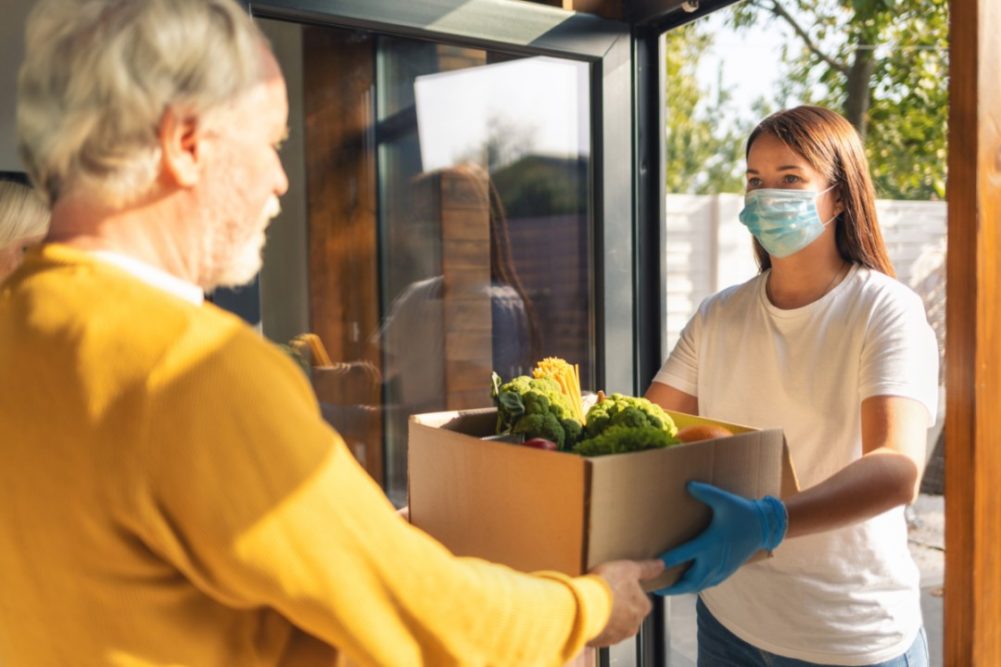CHICAGO — So much has changed in one year. And it’s still changing. As the world evolves, the food supply chain is looking to the COVID-19 retail landscape to prepare for the future.
“The pace and breadth of change has been stunning and is really putting a premium on your ability as a retailer to be agile and to adopt and be willing to make changes on the fly,” said Walter Robb, former longtime co-chief executive officer of Whole Foods Market, Austin, Texas, and current executive-in-residence at S2G Ventures, Chicago, during a Dec. 1 webinar hosted by Spark Change and presented by Naturally Chicago and New Hope Network. “Why does retail matter? Because retail mirrors, reflects and captures the rhythms of our lives. Everything that happens at retail touches everything across the entire food supply chain.”
A recent report from S2G Ventures, “The Future of Food: Through the Lens of Retail,” was the catalyst for the webinar. Robb and co-author S2G vice president Audre Kapacinskas wrote, “The pandemic has shined the brightest of lights on our food system, and retailers sit squarely in the middle. Each new day brings new innovation and evolution in customer choice and system changes.”
S2G Ventures’ mission is “to back the best entrepreneurs that are improving the overall health and sustainability of the food system.” COVID-19 helped them identify opportunities for more improvements. Robb explained that the changes the natural products industry has seen this year were not revolutionary but rather accelerations of evolutionary trends already in progress.
“Retailing of the future is going to be dimensional,” he said. “It’s not just about the products and values. It’s also the community in which it is situated and also the way in which commerce is done.”
According to the report, in this next evolution of food, much of what was once aspirational will be considered table stakes.
“There’s much more context going on,” Robb said. “Delivery and curbside pickup are absolute table stakes going forward. It is going to be essential to provide those services to customers if you want to play in this new world order.”
Every retailer will need to experiment with new formats, everything from design to location to size. Retailers need to prepare for the return of restaurants. To stay competitive, retail foodservice needs to change.
“The perimeter of the store is such an important area in every way, including profitability,” said Brandon Barnholt, CEO of KeHE Distributors, Naperville, Ill. “The perimeter is changing in front of our eyes.
“Bulk foods — scooping stuff into bags — shut down immediately (at the onset of the pandemic). Retailers responded with contactless bulk.”
Fresh Thyme, Downers Grove, Ill., for example, built a business around bulk ingredients and snack foods, as well as grab-and-go bakery items, antipasto buffet and soup/salad bar. The store even had a grind-your-own oats machine; pour-your-own honey, vinegar and olive oil; and cream-your-own nut butter. Now Fresh Thyme offers shoppers contactless bulk for dry items, as well as pre-packaged bulk in many varied sizes. Fluid bulk is pre-portioned in containers on an as-needed basis. Stores recently opened the self-serve soup bar, with an enhanced plastic shield and instructions to use a napkin when touching the ladle. Hand sanitizing stations are adjacent.
“It’s all about quick pivots,” Barnholt said. “Doing everything they can do to serve customers.”
Robb predicted that future growth in food retail will be driven by an interaction between community/customer engagement (digital engagement, frictionless instore experience and transparency); commerce/sales channel (omnichannel capabilities, smart fulfillment and resilient fresh food); and content/products sold (product curation, “farmacy” focus, values-first marketing and sustainability as brand affinity).
There’s a need for innovation to address these opportunities within commerce, community and content in order to drive future growth for food retailers, Robb said.
Anu Goel, president of client growth solutions, SPINS, Chicago, said, “We’ve advanced four to five years technologically. There’s a broadening of who is shopping online and what is being shopped. Everybody is doing it now, and across all categories.”
Whereas the online shopper before the pandemic skewed younger, today four different generations are actively engaging. Eating at home is one COVID-19 impact that is likely to have staying power with the rise of grocery pickup and delivery, as well as the growth in ghost kitchens and food delivery options. Retailers need to pivot to stay relevant.


